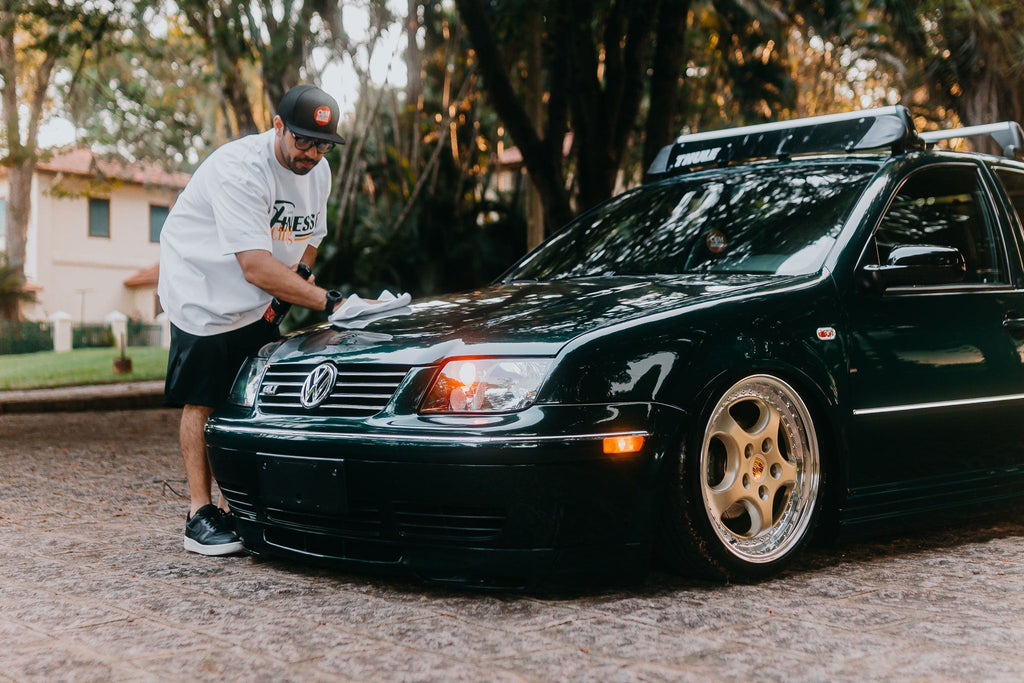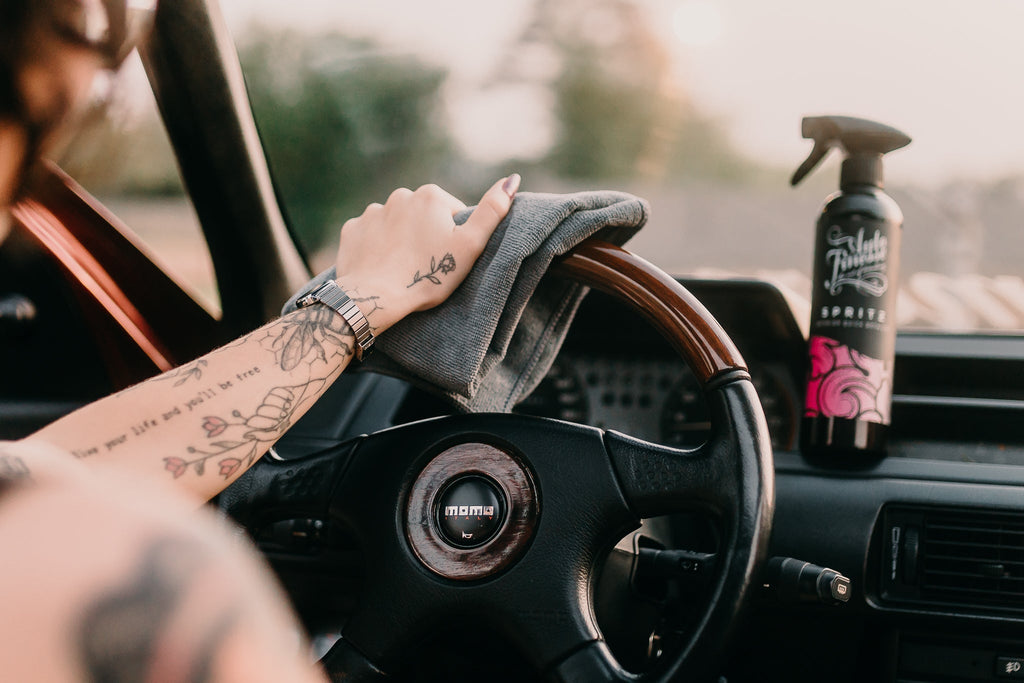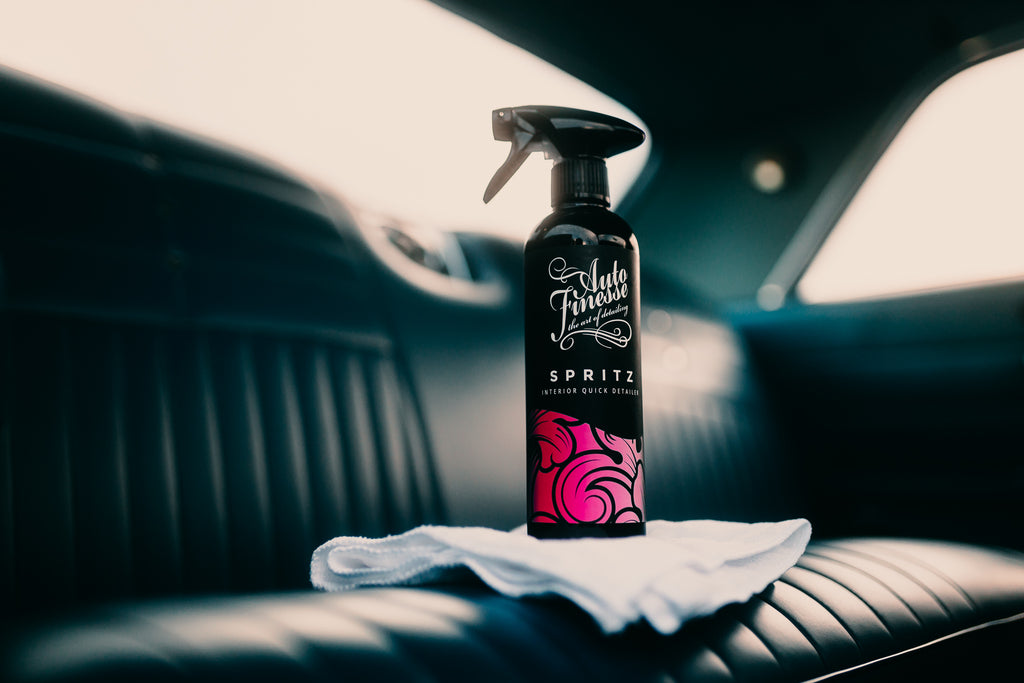Clay Bar - erklärt
At Auto Finesse, we often get asked whether using a clay bar on your car is truly worth it. The short answer? Absolutely. While it may take some time when done correctly, the results make it more than worthwhile. In this article, we’ll explain why claying your car is such an essential step in maintaining its finish.
Using a clay bar on your car’s paint will dramatically improve both its finish and smoothness. Over time, vehicles accumulate road tar, as well as airborne and waterborne contaminants—unless, of course, you have a rare "trailer queen" stored in an airtight container, which most of us don’t! Much of this grime starts off as microscopic particles but gradually builds up. While you might not always see it, we can assure you that if left untreated, it can begin to damage your paint or at the very least, cause oxidation through any protective layer. A regular wash won’t be enough to fully clean your paintwork before applying protection, so using a clay bar is essential before applying wax, sealants, or any other protective products.






The Auto Finesse® Detailing Clay Bar comes as a 200g block and is made from an ultra-fine grade of natural Kaolin clay.... See product details More

So, what exactly is a clay bar? It’s a pliable, putty-like material, similar in texture to plasticine, designed to lift contaminants from the surface of your paint—provided you use it with a proper lubricant, of course.
Once you've tried a clay bar, there's no turning back. You might think you've done a meticulous wash—hours spent applying snow foam, thoroughly cleaning the body with premium car shampoo, a wash mitt, and the two-bucket method. But the moment you run a clay bar over a single panel, you'll be shocked at how much grime it pulls off. We're not exaggerating, especially if it’s your first time using one. If you’ve been regularly clay barring your car every month, that’s a different story since you’re staying on top of the tar and contaminants.
We've been going on about how clay bars remove contaminants from your paint, but here’s the best part... it causes ZERO damage to your paintwork. Although it may sound like an abrasive process, it's actually very gentle. As long as you properly seal your car after using the clay bar, the results will take your paintwork to the next level.


Before using a clay bar, ensure the car is thoroughly washed. Skipping this step means you'll be dragging dirt across the paint, which can lead to swirl marks—something we know you want to avoid! After a good snow foam and wash, use our ObliTARate Tar & Glue Remover or Iron Out Fallout Remover to tackle any remaining iron or tar particles on the paint. This will make the claying process smoother and a lot less messy.
When using a clay bar, it's crucial to use the right lubricant—one that's specially designed for the job. No raiding your Mrs.'s drawers for alternatives! Without trying to sound too salesy, our Glide lubricant pairs perfectly with any paint-specific clay bar and ensures a smooth, effective application.
Avoid working in direct sunlight or extreme heat when clay barring your car. If you're using a new clay bar, it's a good idea to cut it into quarters. This way, if you drop a piece—because let’s face it, it happens—you won’t have to toss the entire bar. And if it does hit the ground, throw it out immediately. If the clay feels stiff at first, be sure to knead it thoroughly. The more pliable it is, the easier it will be to glide over the paint.








The Auto Finesse® Glide clay bar lubricant has been designed to make clay barring your car much easier and efficient. I... See product details More
Now you're ready to start. Spray the clay bar lubricant onto a small section of the panel, and work on completing that area before moving on to the next section.
Don’t forget to apply lubricant to the clay bar as well. Using light to medium pressure, glide the clay across the paint in circular motions, working your way through the panel and lifting any embedded grime as you go. Keep an eye on the surface to make sure it doesn’t dry out. Treat the panel as if you were waxing it. Once finished, wipe it down with a microfibre cloth to remove any residue before moving on to the next section.


It goes without saying, but if you pick up a lot of harsh particles, either fold the clay bar to expose a clean section or try to remove the contaminants. Never use a clay bar that is visibly contaminated—it won’t help your paint at all.
After thoroughly buffing off with a quality microfibre cloth, you’re ready to polish, wax, or seal your paint. This step is crucial. You’ve just spent hours clay barring to remove contaminants, so don’t undo all that hard work by neglecting to protect your efforts.
Once you’ve clay barred and protected your paintwork, you should only need to repeat the process twice a year—once before winter and once after. Of course, you can do it more frequently if you like; this is just the minimum recommendation. The pre-winter treatment is crucial due to the harsh weather your car will face, while the post-winter session is equally important to remove the salt, grime, and brake dust accumulated on our roads during the colder months.
Well, that’s us signing off. We’d love to see your results, so be sure to tag us in your photos on Instagram or Twitter with #. We can’t wait to check them out!











